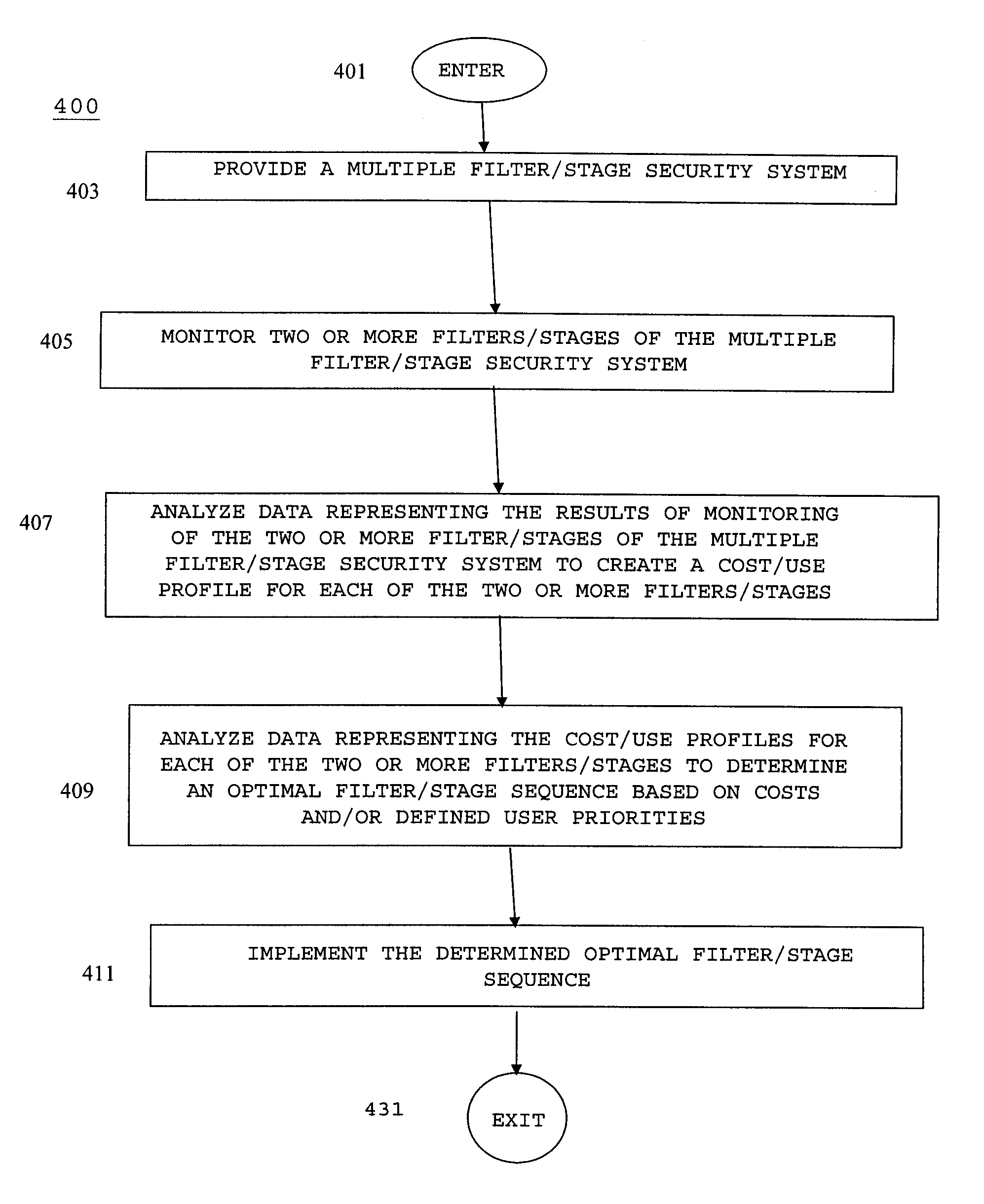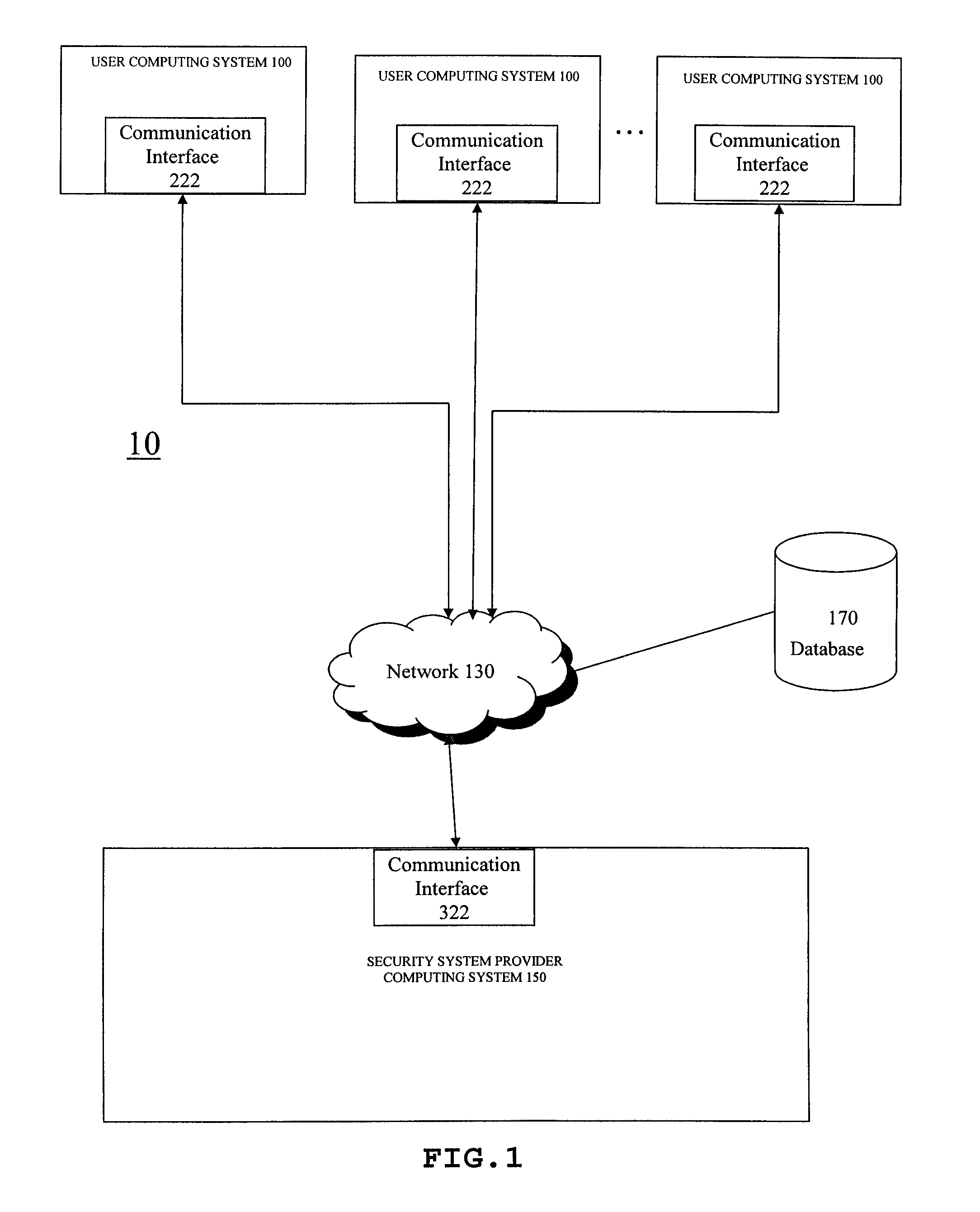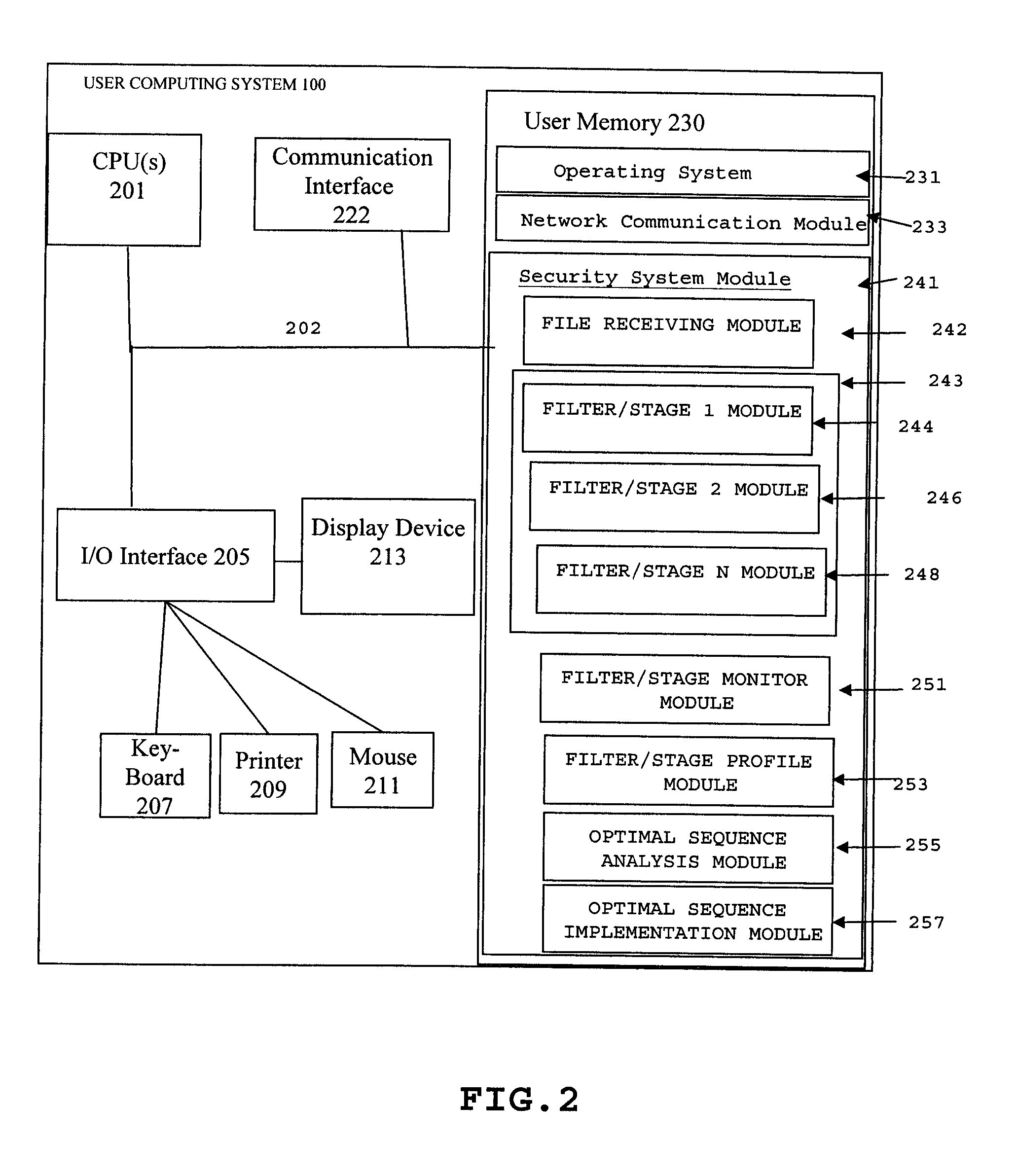One major issue facing modern communications systems, such as
the Internet, is the
prevalence and propagation of spam and / or scam
electronic mail (e-mail), e-mail and / or files that include malicious content, and various other forms of
malware that is propagated via e-mail, instant messages (IMs), or any other forms of
file transfer from computing system to computing system and / or from web-pages / web-based function to
computing systems.
However, each filter / stage of a multiple filter / stage
security system has an associated filter / stage cost.
Given the highly dynamic nature, volume, and variety of undesirable content currently being propagated, this static nature of currently available multiple filter / stage security systems often results in significant amounts of resources being inefficiently, and often ineffectively, allocated.
For instance, as particular types of threats, such as viruses, surface, and / or the nature of the most significant
threat changes, such as a shift from
virus threats to spam-based issues, a static multiple filter / stage
security system may waste significant amounts of time and other resources performing
virus checks on e-mails that will eventually be deemed to be spam at a later filter / stage, and therefore will be discarded anyway.
It may further be the case that the cost of the
virus detection / blocking filter / stage, in terms of the one or more filter / stage cost components discussed above, is relatively high while the cost of spam detection / blocking filter / stage is relatively low.
However, over time, and in some cases a relatively short period of time, it is quite possible that spam will become a far bigger issue for the user than viruses and / or it may be that many viruses are now being transmitted via spam.
However, using currently available multiple filter / stage security systems, the
initial sequence is basically static until manually changed and it is highly unlikely, using currently available multiple filter / stage security systems, that the user would ever even become aware of the change in circumstances and / or nature of the
threat.
Consequently, using currently available multiple filter / stage security systems, the user would continue to perform the costly, and now largely unnecessary,
virus detection / blocking filter / stage on e-mails, IMs, and / or files that will eventually be blocked at the relatively “cheap” spam detection / blocking filter / stage anyway.
However, as the nature of the spam or other undesired content, changes from primarily text-based to primarily image-based, the text-based detection / blocking filter / stage may prove less effective than an image-based detection / blocking filter / stage, despite a higher “cost” of the image-based detection / blocking filter / stage.
However, once again using currently available multiple filter / stage security systems, the
initial sequence is basically static until manually changed and it is highly likely, using currently available multiple filter / stage security systems, that the user would never even become aware of the change in circumstances and / or nature of the
threat.
As a result of the situation described above, and the largely static nature of currently available multiple filter / stage security systems, many users of currently available multiple filter / stage security systems inefficiently, and often ineffectively, allocate their security system resources.
As result, time and money are currently often wasted on:
capital equipment necessary to implement the unnecessary application of one or more filter / stages; hosting unnecessary applications of one or more filter / stages;
processing associated with the unnecessary application of one or more filter / stages;
database access and
access time associated with the unnecessary application of one or more filter / stages; disk
access time associated with the unnecessary application of one or more filter / stages; Input / Output (I / O) latencies associated with the unnecessary application of one or more filter / stages; and / or various other costs associated with the unnecessary application of one or more filter / stages.
This situation is undesirable for both the user and the providers of multiple filter / stage security systems.
 Login to View More
Login to View More  Login to View More
Login to View More 


